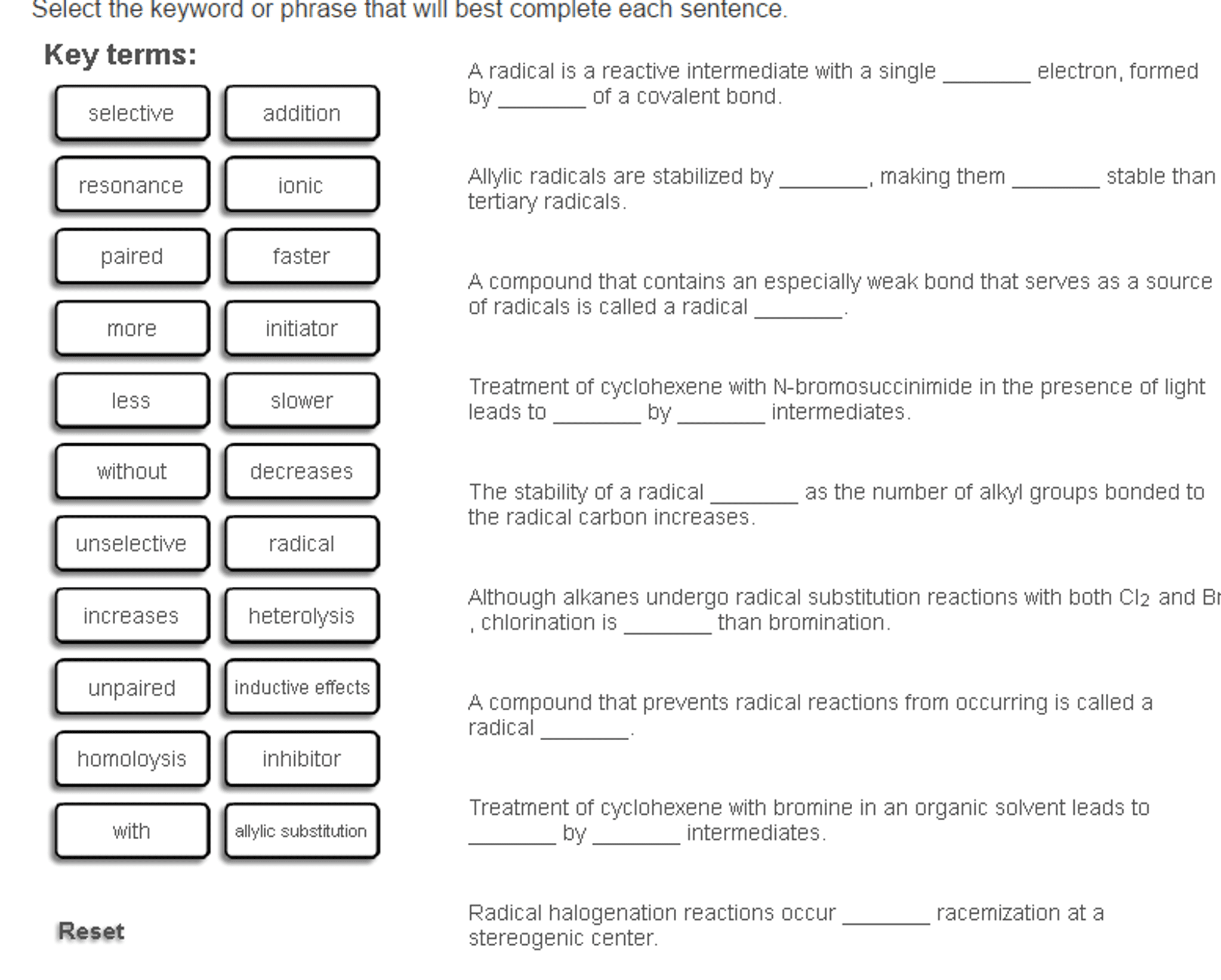CHEM 127 Lecture Notes - Lecture 1: Trigonal Planar Molecular Geometry, Unpaired Electron, Reactive Intermediate

Organic Chemistry Chapter 15
Radical Reactions
15.1, Introduction
- A radical is a reactive intermediate with a single unpaired electron, formed by homolysis of a
covalent bond
A radical contains an atom that does not have an octet of electrons, making it reactive and
unstable
- Radical processes involve single electrons, so half-headed arrows are used to show the
movement of electrons.
- One half-headed arrow is used for each electron
Carbon radicals are classified as primary (1o), secondary (2o), or tertiary (3o) by the number of
R groups bonded to the carbon with the unpaired electron.
- A carbon radical is sp2 hybridized and trigonal planar, like sp2 hybridized carbocations
Cleavage of the weaker bond forms the more stable radical
- The stability of a radical increases as the number of alkyl groups bonded to the radical carbon
increases
Thus, a 3o radical is more stable than a 2o radical, and a 2o radical is more stable than a 1o radical.
- Increasing alkyl substitution increases radical stability in the same way it increases carbocation
stability.
- Alkyl groups are more polarizable than hydrogen atoms, so they can more easily donate
electron density to the electron-deficient carbon radical, thus increasing stability
find more resources at oneclass.com
find more resources at oneclass.com
Document Summary
A radical is a reactive intermediate with a single unpaired electron, formed by homolysis of a covalent bond. A radical contains an atom that does not have an octet of electrons, making it reactive and unstable. Radical processes involve single electrons, so half-headed arrows are used to show the movement of electrons. Carbon radicals are classified as primary (1o), secondary (2o), or tertiary (3o) by the number of. R groups bonded to the carbon with the unpaired electron. A carbon radical is sp2 hybridized and trigonal planar, like sp2 hybridized carbocations. One half-headed arrow is used for each electron. Cleavage of the weaker bond forms the more stable radical. The stability of a radical increases as the number of alkyl groups bonded to the radical carbon increases. Thus, a 3o radical is more stable than a 2o radical, and a 2o radical is more stable than a 1o radical.



